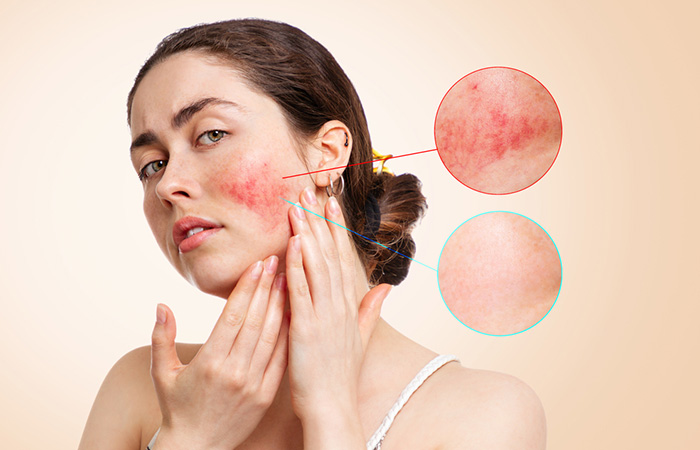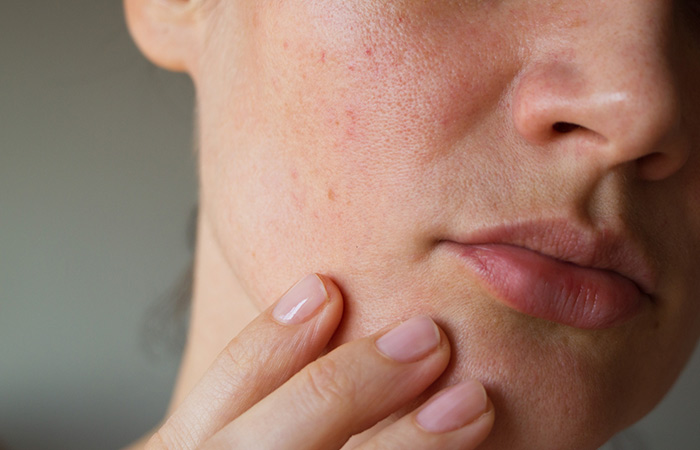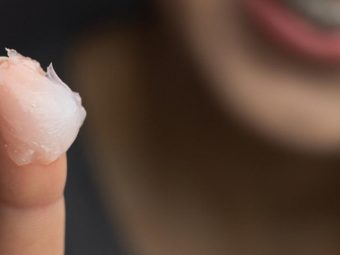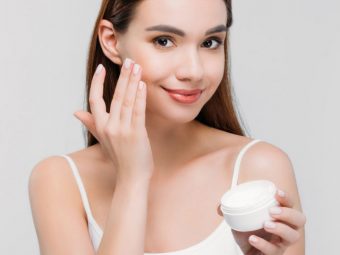Madecassoside For Skin: Benefits And How To Use
A sneak-peek into the therapeutic properties of this multipotent ingredient

Image: Shutterstock
Madecassoside for skin care is quickly becoming popular due to its anti-inflammatory and anti-aging qualities. So, what are the benefits of madecassoside for the skin? This potent ingredient soothes skin irritation while reducing dryness and itching. Numerous skin care products contain this component in their formulas due to its effectiveness. This article will go over madecassoside in more detail, including its benefits and possible side effects. Keep reading!
 Know Your Ingredient: Madecassoside
Know Your Ingredient: MadecassosideWhat Is It?
An antioxidant and anti-inflammatory active ingredient isolated from the Centella asiatica plant.
What Are Its Benefits?
It may help fight inflammation, reduce acne and skin redness, heal photodamaged skin, and reduce the appearance of fine lines and wrinkles.
Who Can Use It?
Due to its hydrating and soothing nature, madecassoside is suitable for all skin types, especially damaged, sensitive, and acne-prone skin.
How Often?
You can use it twice daily.
Caution
Though Madecassoside has no reported side effects, it is still advised to do a patch test before using it on your skin.
What Is Madecassoside?
Madecassoside is an active ingredient of the Centella Asiatic plant and is popularly used in many skin care products and moisturizers. It is known to combat different skin issues like inflammation and redness and enhance skin quality. Madecassoside acts as a repairing agent for skin. It is rich in amino acids, fatty acids, and phytochemicals well known for their healing and soothing properties.
 Trivia
TriviaIn the following section, we will look at the benefits of madecassoside for skin.
In This Article
Benefits Of Madecassoside For Skin
Below listed are a few benefits of madecassoside for your skin.
- May Help Fight Inflammation: Madecassoside may help fight inflammation, acne, or skin redness. It also may help treat photodamaged skin (1). Madecassoside also protects your skin from the harmful effects of UV rays and pollutants (2).
- May Suit All Skin Types: Madecassoside may suit all skin types. It may boost hydration in dry skin and calm down the inflammatory cells in acne-prone or sensitive skin. However, concrete research is lacking in this regard and more information is warranted.
- Has Anti-Aging Properties: Madecassoside may also make you look younger thanks to its excellent anti-aging properties (1). From a dermatology point of view, this ingredient may play a huge role in promoting collagen synthesis and reduce wrinkles, dryness, and skin roughness.
 Fun Fact
Fun FactThese are the important benefits of madecassoside. In the next section, we will look at how you can use it to avail its benefits.
How To Use Madecassoside
Madecassoside is generally found in thick creams and balms. Most creams with madecassoside go well with the combination of niacinamide, witch hazel, and panthenol. These ingredients work together to enhance skin moisture and reduce skin redness. Madecassoside creams can be topically applied during the day or night over a cleansed and dry face, lips, and body.
The combination of vitamin C and madecassoside helps boost collagen production (3). These ingredients are usually found in a variety of serums and can be applied twice a day, in the morning and at night.
Another combination includes madecassoside with hyaluronic acid, which further hydrates skin and makes skin supple. Hyaluronic acid offers deep moisturization and softens the skin too. This combination can also be used day and night, on a cleansed and toned face.
While madecassoside seems to have certain benefits, it also may cause adverse effects in some individuals. We will explore the same in the following section.
Side Effects Of Madecassoside
Though madecassoside may work on all skin types, it still could cause allergies in those with excessively sensitive skin. However, direct research pertaining to the side effects of madecassoside is lacking.
You are still advised to do a patch test before using it on your skin.
The Difference Between Madecassoside And The Rest
The incorporation of the Centella Asiatic plant is a revolutionary discovery in the skincare industry. The plant and its compounds like Madecassoside, Madecassic Acid, Asiaticoside, and Asiatic Acid have also changed the face of skincare and have made complex skin issues easier to combat. Here is a quick rundown of Madecassoside and other components
- Madecassic Acid: Madecassic acid is also a component of the Centella Asiatic plant. It is similar to madecassoside and has the power to stimulate collagen and heal skin. It also calms and reduces skin redness.
- Asiaticoside: Asiaticoside is a phytochemical found in the Centella Asiatic plant. It may help fade scars and prevent breakouts. It also has antibacterial properties.
- Asiatic Acid: The Asiatic acid promotes collagen production and faster wound and acne healing. It also may fight premature aging.
Madecassoside is a good choice for people who want to get rid of skin inflammation and redness. Because of its efficacy, this ingredient is found in many cosmetics and skincare products. It helps calm your skin and seal in moisture. It may also aid in the restoration of damaged skin. Madecassoside creams can be applied topically to a cleansed and dry face, lips, and body at any time of day or night. It may, however, trigger allergies in people who have extremely sensitive skin. Therefore, it is suggested that you perform a patch test before using madecassoside for the skin and consult a doctor if you experience any side effects.
Frequently Asked Questions
Is madecassoside a ceramide?
No, madecassoside is a pentacyclic triterpene compound present in the plant Centella asitica (L.) (1).
Is madecassoside good for eczema?
Possibly. Madecassoside can help soothe your skin and has anti-inflammatory properties that may help manage eczema.
Is madecassoside antibacterial?
Anecdotal evidence supports the antibacterial action of madecassoside. However, there is a lack of scientific research supporting this claim.
Is madecassoside safe for pregnancy?
Yes. Madecassoside and its products can be safely used during pregnancy. Consult your doctor for medical advice.
Key Takeaways
- Madecassoside is a plant-derived active ingredient used in many skin care formulations.
- Rich in amino acids and phytochemicals, it helps heal and repair the skin.
- It enhances the beneficial effects of vitamin C and hyaluronic acid when used with them.
Discover the amazing benefits of madecassoside for dry and sensitive skin! Check out this video and learn how this natural ingredient can help soothe and nourish your skin.
Sources
Articles on StyleCraze are backed by verified information from peer-reviewed and academic research papers, reputed organizations, research institutions, and medical associations to ensure accuracy and relevance. Read our editorial policy to learn more.
- Madecassoside Inhibits Melanin Synthesis by Blocking Ultraviolet-Induced Inflammation
https://www.ncbi.nlm.nih.gov/pmc/articles/PMC6290557/ - Protective Effect of Madecassoside
https://www.ncbi.nlm.nih.gov/pmc/articles/PMC5584231/ - Clinical biometric and structural evaluation of the long-term effects of a topical treatment with ascorbic acid and madecassoside in photoaged human skin
https://pubmed.ncbi.nlm.nih.gov/18503551/























